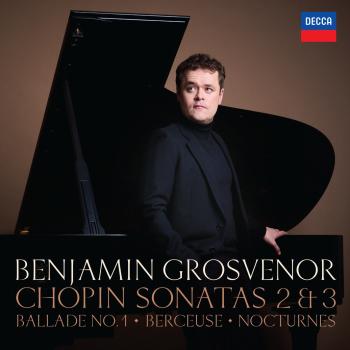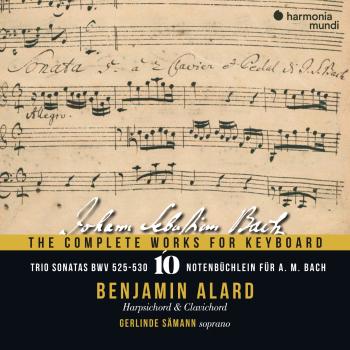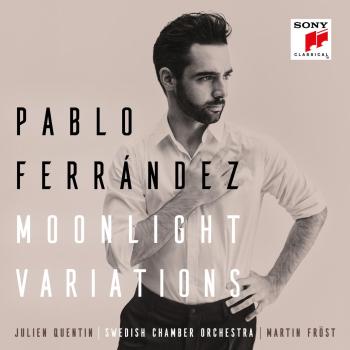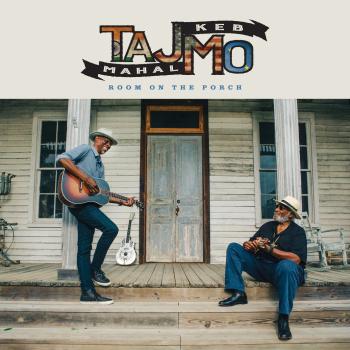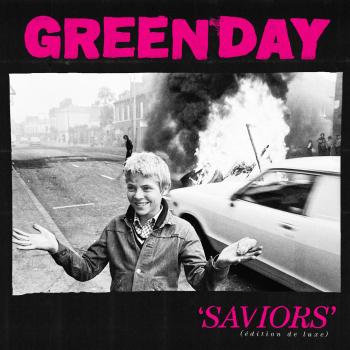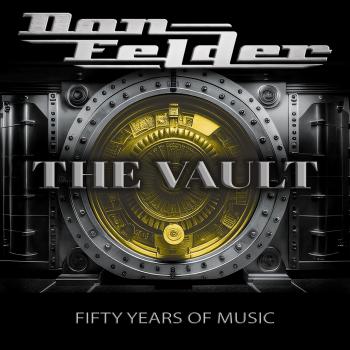
Symphony No. 3, 'Circus Maximus' / Gazebo Dances John Corigliano
Album Info
Album Veröffentlichung:
2009
HRA-Veröffentlichung:
07.12.2011
Label: Naxos
Genre: Classical
Subgenre: Orchestral
Interpret: John Corigliano
Komponist: John Corigliano (1938), Jr. Wendell Tilley
Das Album enthält Albumcover
- Symphony No. 3, Circus Maximus
- 1 I. Introitus 03:27
- 2 II. Screen / Siren 04:48
- 3 III. Channel surfing 05:03
- 4 IV. Night Music I 06:41
- 5 V. Night Music II 04:00
- 6 VI. Circus Maximus 04:05
- 7 VII. Prayer 05:59
- 8 VIII. Coda: Veritas 01:40
- Gazebo Dances (arr. for band)
- 9 I. Overture 04:49
- 10 II. Waltz 02:57
- 11 III. Adagio 06:36
- 12 IV. Tarantella 02:34
Info zu Symphony No. 3, 'Circus Maximus' / Gazebo Dances
In his astonishing Symphony No. 3, subtitled ‘Circus Maximus’, the celebrated American composer John Corigliano both embodies and comments on the “massive and glamorous barbarity” of our present time, which he sees paralleling the decadence of Ancient Rome. Scored for a large concert band encircling the audience, it is a musical kaleidoscope of contemporary culture.
In contrast, Gazebo Dances was inspired by “the pavilions often seen on village greens in towns throughout the countryside, where public band concerts are given on summer evenings”.
John Corigliano’s Third Symphony (2004), subtitled Circus Maximus…is an eight-section tone poem lasting 35 minutes. It opens with blaring fanfares (these will recur) and moves through sultry saxophones, Zappa-ish clutter (‘Channel Surfing’), an Ivesian marching band walking down the aisle, and stale bits and pieces of jazz sure to keep students and bored band audiences winking (when they are not nodding off). Two adjacent ‘Night Music’ movements pass the time. Kancheli-esque blasts either awaken or murder snoring offenders. After the noisy climax, a homey but blurry Copland-ish chorale suggests some sort of ‘Prayer’…piece ends with a gunshot pointed toward a seat in the rafters (photo included)…The Gazebo Dances (1972) are arrangements of pieces originally written for piano four hands (and recorded in that form on CRI 659). Affable and appealing (especially the splendid ‘Overture’), they serve to remind us of this composer’s youthful genius…the University of Texas at Austin student players sound great. (Allen Gimbel American Record Guide)
The University of Texas Wind Ensemble
Jerry F. Junkin, Director
John Corigliano, Jr. - Composer
is among the most honored composers in the United States. He was awarded the 2001 Pulitzer Prize in Music for his Symphony No. 2, introduced in November 2000 by the Boston Symphony Orchestra and subsequently heard in New York, Helsinki, Berlin, and Moscow. In March 2000, Corigliano’s third film score, for The Red Violin, was awarded the Academy Award (“Oscar.”) Corigliano’s Symphony No. 1, an impassioned response to the AIDS crisis, captured the 1991 Grawemeyer Award for Best New Orchestral Composition; The Chicago Symphony’s recording of the piece won the Grammy awards for both Best New Composition and Best Orchestral Performance, and it has been played by over 150 different orchestras worldwide.
A Distinguished Professor of Music at the City University of New York, Corigliano was named in 1991 both to the faculty of the Juilliard School and to the American Academy of Arts and Letters, an organization of American’s most prominent artists, sculptors, architects, writers, and composers: he is one of the few living composers to have a string quartet named after him.
Commissioned by The Metropolitan Opera, where it premièred in December 1991, Corigliano’s “grand opera buffa” The Ghosts of Versailles sold out two engagements at the Metropolitan (1991 and 1994) as well as its 1995 production at the Chicago Lyric Opera. The nationwide telecast of the Metropolitan’s première production was released on videocassette and laser-disk by Deutsche Grammophon. Following its première, The Ghosts of Versailles collected the Composition of the Year award from the first International Classic Music Awards. In April 1999, The Ghosts of Versailles received its European première, in a new production directed and designed for the opening of the new opera house in Hannover, Germany, and is due for another revival at the Met in the ’09–’10 season. Recent works include 2004’s Circus Maximus: Symphony No. 3, for multiple wind ensembles: Concerto for Violin and Orchestra (‘The Red Violin’) released on compact disk by Sony in December 2007 with Marin Alsop leading soloist Joshua Bell and the Baltimore Symphony Orchestra and the orchestral song cycle Mr Tambourine Man: Seven Poems of Bob Dylan, recorded for Naxos in March 2007, with JoAnn Falletta leading soprano soloist Hila Plitmann and the Buffalo Philharmonic (Naxos 8.559331).
Corigliano’s catalogue includes three symphonies, seven concerti (for violin, flute, clarinet, oboe, guitar percussion, and piano), numerous shorter works for orchestra and an extensive catalogue of chamber works, which have been recorded on numerous major labels. His music is published exclusively by G. Schirmer, Inc.
University of Texas Wind Ensemble
Conducted by Jerry Junkin, The University of Texas at Austin Wind Ensemble has firmly established itself as one of the world’s élite wind bands. Active in the area of commissioning new music for the repertoire, the ensemble has offered world première performances of works by many of the leading musical minds of the twentieth and twenty-first centuries. Graduates of the Wind Ensemble hold major positions in each of the Washington-based military bands and major symphony orchestras throughout the world.
The Wind Ensemble made its European début in 1991, and its New York début at Carnegie Hall in February 1998. Following a return engagement to in 2005, the ensemble embarked on a seventeen-day European Tour during the summer of 2008. The group made its California début in 2007 at the Festival del Sole in Napa Valley.
Jerry Junkin - Professor of Instrumental Conducting
is Fellow to the Vincent R. and Jane D. DiNino Chair for the Director of Bands at The University of Texas at Austin, where he also holds the title of University Distinguished Teaching Professor.He has served as Artistic Director and Conductor of the Dallas Wind Symphony since 1993, and in 2003 he was also appointed Music Director and Conductor of the Hong Kong Wind Philharmonia. Additionally, he has served on the faculties of both the University of Michigan and the University of South Florida. In addition to his responsibilities as Professor of Music and Conductor and Music Director of the Texas Wind Ensemble, he serves as Head of the Conducting Division and teaches courses in conducting and wind band literature. He is a recipient of the Texas Excellence in Teaching awards, presented annually by the Ex-Student's Association, and his former students hold major positions throughout the world. In 2004, he was elected to the Academy of Distinguished Teachers and in 2005 was the recipient of the Fine Arts Achievement Award.
Performances under the direction of Mr. Junkin have won the praise of such notable musicians as John Corigliano, David Del Tredici, Gunther Schuller, Karel Husa, William Kraft, Jacob Druckman and Michael Colgrass, among many others. In February of 2005 he led the world premiere performance of Corgliano's Circus Maximus: Symphony No. 3, in both Austin and New York's Carnegie Hall to enthusiastic reviews. The New York Times named his recent release on the Reference Recordings label, Bells for Stokowski, one of the best classical CD's of the year. Mr. Junkin records for the Reference, Klavier and Naxos labels
Maintaining an active schedule as a guest conductor, clinician and lecturer, he has appeared in those capacities in forty-eight states and on five continents. He spends his summers in residence at the Interlochen Arts Camp in Michigan, as well as appearing at major festivals throughout the world. In 2005 he was presented the Grainger Medallion by the International Percy Grainger Society in recognition of his championing of Grainger's works.
Mr. Junkin has served as President of the Big XII Band Director's Association and is a member of the Board of Directors of The John Philip Sousa Foundation, Past-President of the American Bandmasters Association, and Past President of the College Band Directors National Association. This past season he made his debut with the Tokyo Kosei Wind Orchestra and the Taipei Symphonic Winds, along with engagements in Germany, France and Austria.
Dieses Album enthält kein Booklet

